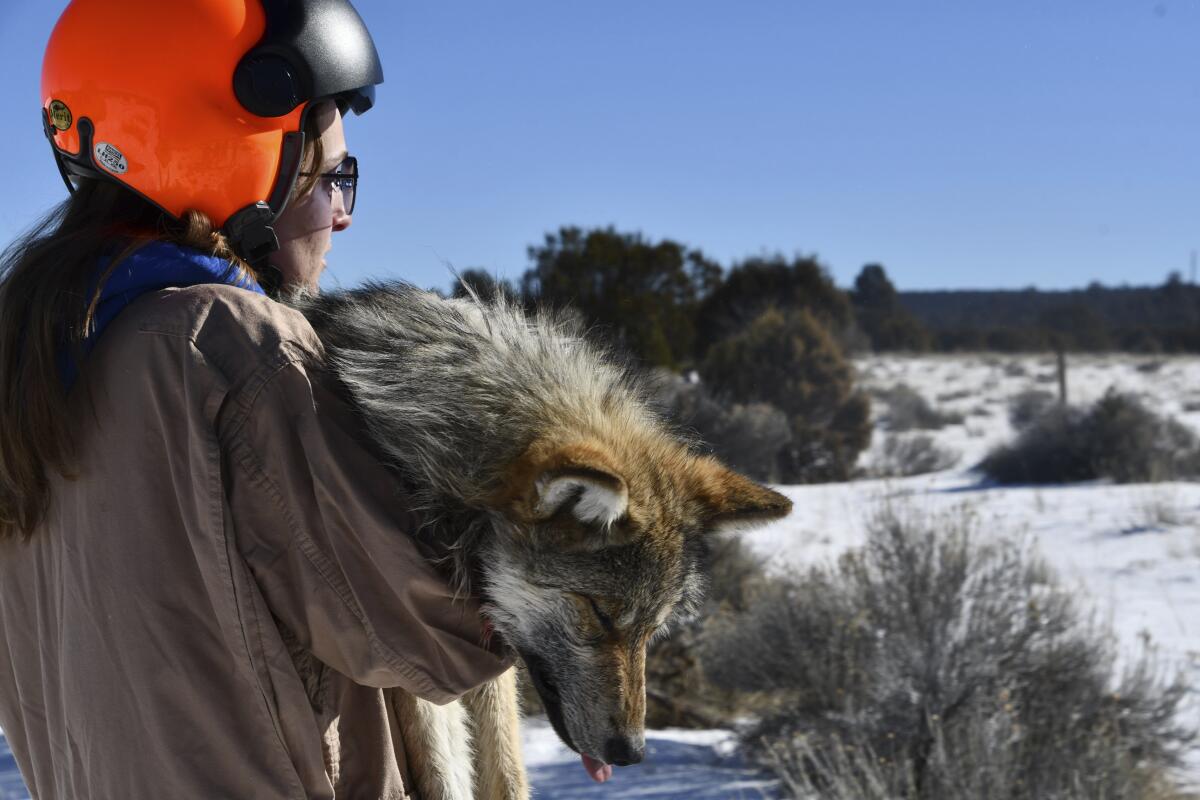Endangered Mexican wolf population makes strides in U.S.

- Share via
ALBUQUERQUE — Endangered Mexican gray wolves are making more strides, as more breeding pairs and pups have been documented since reintroduction efforts began in the southwestern U.S. more than two decades ago, federal wildlife managers said Tuesday.
The U.S. Fish and Wildlife Service released the results of its annual survey in New Mexico and Arizona, saying this is the first time the population has topped 200 and the seventh straight year that the numbers have trended upward.
In all, at least 241 of the predators were counted, marking a nearly 23% increase over the previous year and a doubling of the population since 2017.
Since the first wolf release in 1998, the program has had its share of fits and starts due to illegal killings, a lack of genetic diversity and legal wrangling over management.
“To go from zero wild Mexican wolves at the start to 241 today is truly remarkable,” Mexican wolf recovery coordinator Brady McGee said in a statement.
Andrés Manuel López Obrador had previously raised concerns about the lack of water for Tesla to build in northern Mexico.
The annual count started in November, with members of the interagency field team conducting ground and aerial surveys of a rugged forested area along the Arizona-New Mexico line. Aside from tracking radio-collared wolves, they used remote cameras and collected scat to estimate the population.
The work is done over the winter when the population is most stable.
It’s estimated that thousands of Mexican wolves once roamed from central Mexico to New Mexico, southern Arizona and Texas. Predator eradication programs began in the late 1800s, and within several decades the wolves were all but eliminated from the wild.
The rarest subspecies of gray wolf in North America, Mexican wolves were listed as endangered in the 1970s and a U.S.-Mexico captive breeding program was started with the seven remaining wolves in existence.
Wolf-livestock conflicts have been a major challenge of the reintroduction program in the last two decades, with ranchers saying the killing of livestock by wolves remains a threat to their livelihood despite efforts by wildlife managers to scare the wolves off and reimburse some of the losses.
Jim deVos, Arizona Game and Fish Department Mexican wolf coordinator, said recovery for any endangered species is difficult and this has proved to be the case for the Mexican wolf. Still, he described growth over the last year as stunning.
Ukraine’s military says an anticipated Russian offensive has already begun on the northeastern front, which could determine the war’s next phase.
“By every possible measure, progress was made,” he said, pointing to 31 breeding pairs that produced 121 pups, about two-thirds of which survived to the time of the count. The survival rate for pups in their first year is typically around 50%.
The field team captured and collared 21 wolves during the survey. Officials said the additional collars will help them gain a better understanding of wolf activity and help with on-the-ground management.
The cross-fostering of captive bred pups with packs in the wild also has added to the population and has helped to address concerns about genetic diversity. This year, two of the 11 pups that were fostered survived.
Officials also documented the lowest annual total of wolf deaths since 2017 — six in Arizona and six in New Mexico for 2022. In 2020, 29 wolves were reported dead and 25 the following year.
Environmental groups celebrated the numbers but cautioned Tuesday that more work is needed to improve genetics among the wild population and that the U.S. Fish and Wildlife Service needs to allow wolves to roam beyond what they call arbitrary boundaries that have been established for the recovery area.
Citing low survival rates for cross-fostered pups, the groups have been pushing for more family groups — adult wolves with pups — to be released into the wild.
More to Read
Sign up for Essential California
The most important California stories and recommendations in your inbox every morning.
You may occasionally receive promotional content from the Los Angeles Times.












